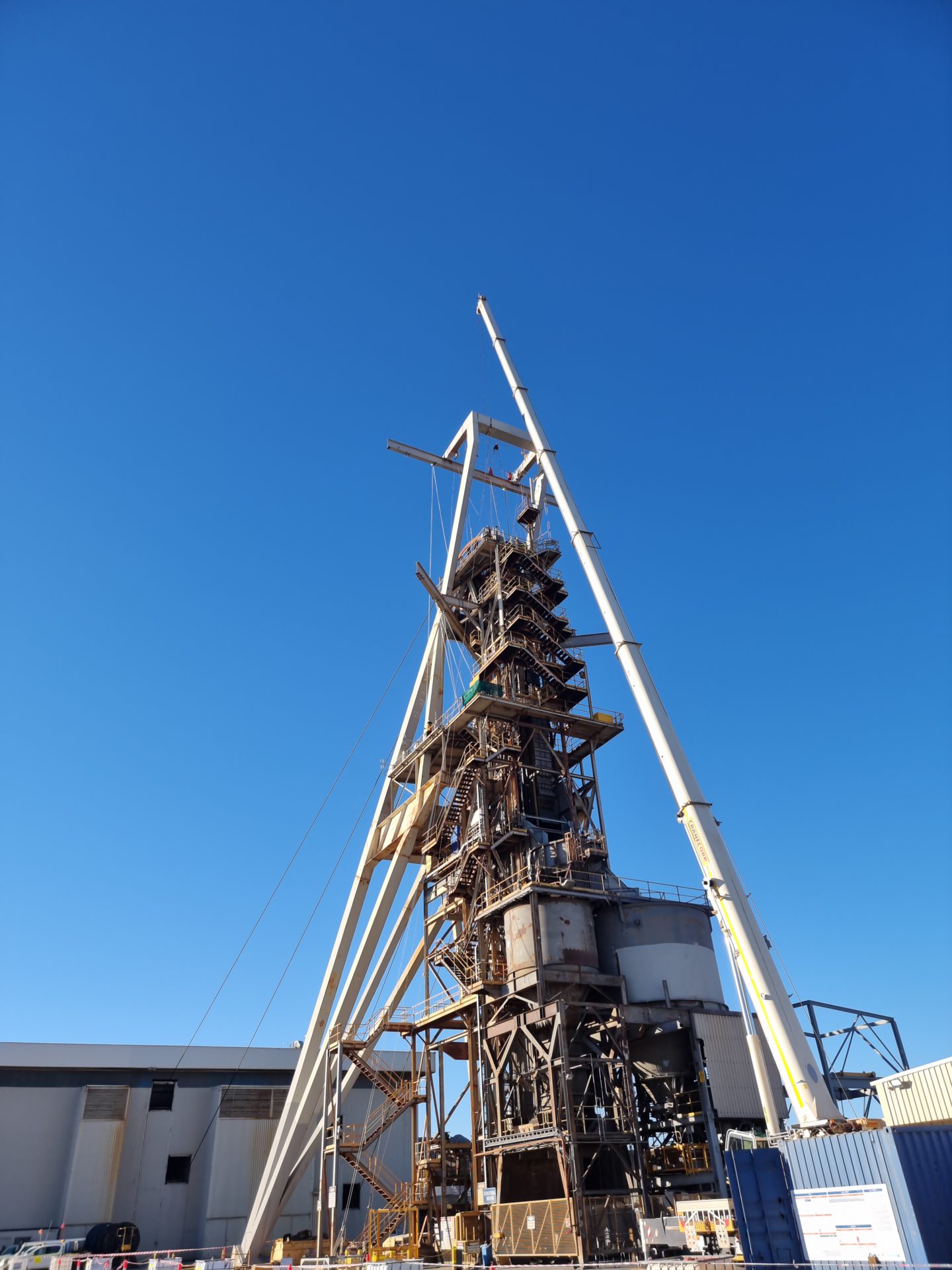
Rope access is a skilled working at heights solution which uses highly trained workers to access hard to reach locations. Regulated by the Industrial Rope Access Trade Association (“IRATA”), it enables workers to carry out work safely and efficiently, with minimal disruption to surrounding operations.
IRATA’s regulatory framework is stringent. It imposes rigorous planning and risk assessment procedures, together with a comprehensive training, assessment and certification scheme (from level 1 through to level 3 certification) for tradespeople and trade support wanting to become rope access qualified.
The robust program and the independent monitoring of compliance by IRATA sets IRATA members apart from non-certified rope access users.
Rope Access at AusGroup
AusGroup’s subsidiary company MAS is one of the leading IRATA-registered providers of rope access solutions in Australia and is highly respected within the industry.
“At MAS we have a team of people who are global leaders in the rope access field and who are driving our safe rope access offering to clients,” Shane Kimpton, AusGroup’s Chief Executive Officer said. “We do genuinely stand out from our competitors in this area.”
The AusGroup and MAS team of experts includes Tamas Kepes, a world-renowned global leader in the industry who has developed and implemented rope access solutions around the world for over 30 years. Tamas—an IRATA assessor, instructor member of the IRATA Training Committee, and a former member of the IRATA Health and Safety Committee, is arguably one of the most experienced rope access specialists, not only in Australia but also around the world.
Tamas is humble about his own rope access credentials but is quick to highlight the importance of AusGroup’s culture of open and honest communication in the overall effectiveness of its rope access services.
“AusGroup places safe client outcomes at the forefront of all decisions and recommendations. So, if rope access isn’t the right solution for a particular job, we say that, and we find an alternative that works better. But if rope access is the best solution, then our clients know that they’re working with a team of the highest caliber with the focus on safety and that the job will be completed more efficiently and more safely than it otherwise would be,” Tamas explained.
The improved productivity and efficiency which save time and cost, and the improved safety outcomes that come from using rope access are significant. “Not only does rope access take away the need for scaffolding in the right setting but there are real efficiencies with reducing labour hours. The team completing the maintenance work are the trained rope users, so there’s no need to involve anyone else, and the project person-at-risk hours are minimised,” Tamas said. “Once this is explained to asset owners, they really appreciate the benefits of using rope access. Of course, it’s important in each situation to assess whether rope access is viable and the right solution.”
Mark Stearman, an AusGroup Project Manager who has been involved with many rope access projects over many years, agrees: “Rope access can be a much more efficient and effective solution for clients than traditional scaffolding solutions. It avoids much of the down time of scaffolding and reduces the number of people needed on site. Importantly, it’s also a safer solution, because of the comprehensive processes and procedures that sit behind it.”
Current Nickel Project
It’s a solution that is currently being used by AusGroup as part of its headframe remediation engagement with a Nickel refiner in Western Australia. The 9-storey headframe has been used for underground nickel mining in the region for over a generation, providing access to a mining “highway” some 1.2 kilometres underground for over forty years.
As a strategically important and valuable site asset, the remediation of the headframe is a significant project.
“It’s a really interesting one to be involved with,” Mark explained. “The client were looking to upgrade the headframe to effectively make it brand new, but hadn’t really considered using rope access to complete the work. We were able to design a work scope for the remediation which consists of three phases, using a top-down approach. Our team of twelve technicians and maintenance staff are using ropes to complete the remediation, to date we’ve removed redundant items from level nine down to level six as part of the first work package. Our progress and the outcomes we’ve achieved to date are as good or better than we could have hoped for.”
Mark believes the market in Australia is maturing with greater awareness of the benefits that rope access can bring. “Sometimes clients are surprised to learn that rope access is such a specialised and regulated skill, and that it’s the IRATA-qualified workers who are also the on-the-job trades specialists,” he said. “There’s a real depth of talent and skill involved.”
Tamas agreed. “Rope access is a profession. It requires commitment and dedication of individuals but also needs the commitment and dedication of the organisation behind them. AusGroup certainly has that. As a business we’re really well placed to leverage from our experience and to genuinely offer improved productivity and efficiencies to our clients.”
